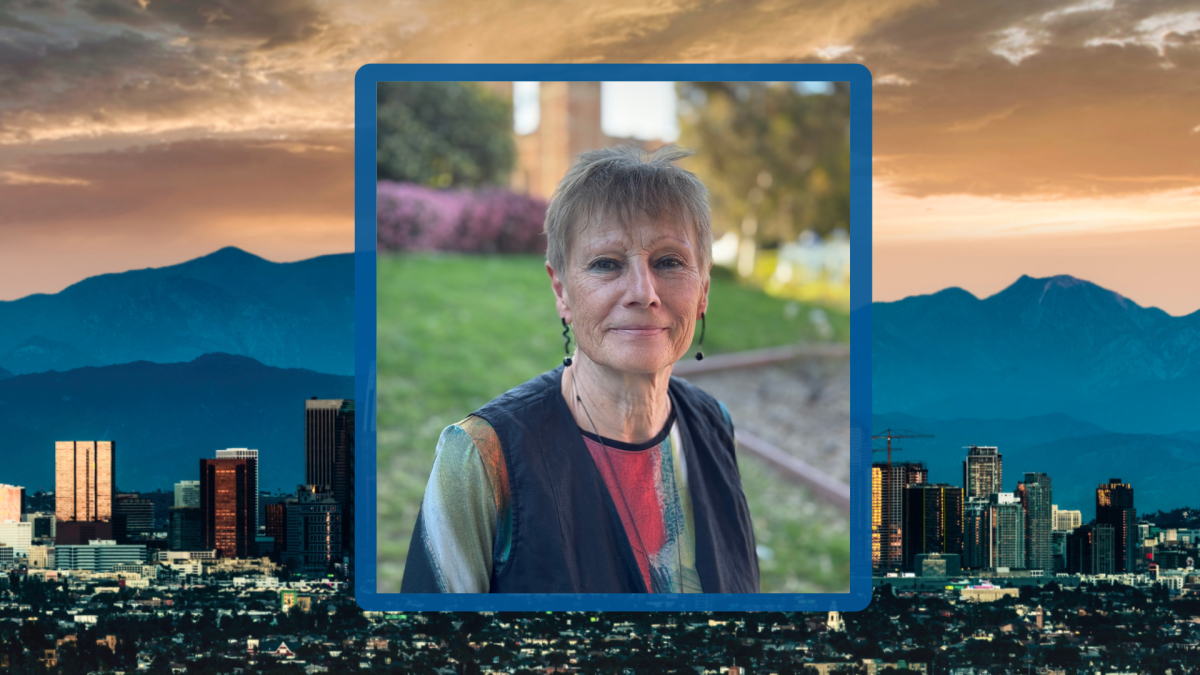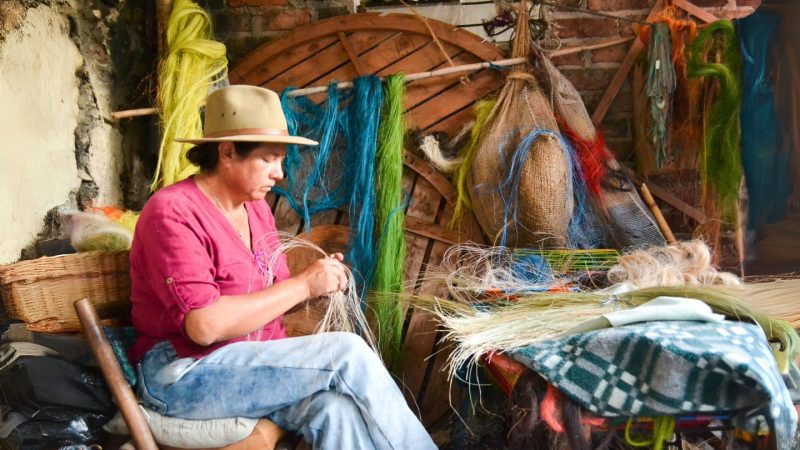
Professor Ursula K. Heise receives the 6th Biophilia Award for pushing forward the field of Environmental Humanities at a global scale
Professor Ursula K. Heise receives the BBVA Foundation’s 6th Biophilia Award for pushing forward the formation and implementation of the field of Environmental Humanities at a global scale.
The BBVA Foundation recognizes Ursula Heise for expanding our capacity to understand and meet the great environmental challenges from the perspective of the humanities.
Reposted with permission. Original published on BBVA Foundation website.
Professor Ursula K. Heise receives the BBVA Foundation’s 6th Biophilia Award for pushing forward the formation and implementation of the field of Environmental Humanities at a global scale. For two decades now, the Marcia H. Howard Term Chair in Literary Studies at the University of California, Los Angeles (UCLA), “has explored the varied shapes that environmental thought, narrative and activism take in different regions of the world,” in the words of the committee deciding the award.
The “eco-cosmopolitanism” concept the awardee developed in books such as Sense of Place and Sense of Planet (2008), and her studies on the cultural meanings of endangered species in works like Imagining Extinction (2016), stand as milestones in the Environmental Humanities whose influence, says the committee, “has extended into international policy” through her analysis of texts like the Red List of Threatened Species drawn up by the International Union for Conservation of Nature (UICN).
Professor Heise, it adds, has contributed decisively to the worldwide development of the Environmental Humanities “beyond the Anglo-American and European spheres, through the establishment of a network of environmental artists, humanists, scientists and activists in countries including Argentina, Australia, Japan, South Korea, Taiwan, and Vietnam.”
In sum, the awardee’s work has demonstrated “how the humanities can and should join forces with the natural sciences, social sciences, policy, law, and digital technologies to increase our abilities to understand and meet the major environmental challenges of our time.”
The BBVA Foundation Biophilia Award, funded with 100,000 euros, distinguishes contributions from the realms of the humanities, social sciences and communication that help reframe humankind’s relationship with nature. Its aim is to distinguish narratives and interpretations which, while being reliant on or compatible with environmental science knowledge, contribute from these disciplines to shaping the perspectives, conceptual frameworks and values of society as a whole with regard to the environment.
The social, historical and cultural dimensions of the environment
“The fundamental idea of the Environmental Humanities,” explained Ursula Heise (Koblenz, Germany, 1960) in an interview shortly after receiving the news of the Biophilia Award, “is that environmental processes, risks and crises are not primarily or only issues of science and technology, but that they’re questions of society, culture, history and values.” This being so, processes like climate change, biodiversity loss, deforestation or soil erosion “actually look very different when you take into account different languages, different historical memories and different cultural frameworks of understanding. And in this sense, we cannot approach environmental problems without considering them as problems of society, culture and values.”
Heise has devoted much of her career to exploring how different traditions of thought about nature in different languages and cultures influence ways of interpreting environmental challenges. This innovative line of humanistic research is, she believes, of paramount importance at a time when the future of life on our planet hangs in the balance: “If we want to successfully communicate about the environmental crisis and form alliances with people around the world to combat biodiversity loss or climate change or ocean acidification, we really need to understand these cultural differences.”
Born into a family she describes as “not particularly nature-oriented,” environmentalism played little part in her childhood and adolescent years. Her passion was literature, and after completing a degree in Romance Philology at the University of Cologne and a PhD in English and American Literature at Stanford University, in the early 1990s she took up an assistant professorship in English and Comparative Literature at Columbia University. It was then that she made a decision that would color the whole of her personal and intellectual life: “In 1995, I bought a bird from a pet store. I feel a little ashamed of it today because I do not think that animals should be bought or sold. It was a female I called Michiko, incredibly vivacious and intelligent, and she changed my mind completely about what birds are. So I got really interested in them and shortly afterwards joined a birdwatching group. We would go into Central Park to watch and identify the migratory birds that land in the green areas of New York City. That then triggered a whole intellectual and personal transformation for me, where I became really interested in environmentalism and conservation.”
One immediate consequence was that Heise switched her research focus from postmodernism and its impact in literature, architecture and the arts to the environmental humanities, a field where she has risen to become “a global thought leader,” in the words of the committee.
Eco-cosmopolitanism: from zooming in on the local to zooming out to the global (and vice versa)
In 1969, the iconic image of Earth taken from lunar orbit by the Apollo astronauts became a cultural touchstone for the worldwide ecologist movement. “It was the image of an Earth that was not unlimited, but that was a discrete unit,” Heise reflects today. “That blue and white ball looked like a precious stone against the black background of outer space. Both the limitedness and the fragility and the preciousness of Earth were foregrounded in that image, which would feature prominently in the first Earth Day in 1970.”
Three decades later in 2001 came another tech milestone, the launch of Google Earth, which Heise believes has helped shape environmental awareness. Suddenly “even an average computer user could access images of the place where they lived then pan out to the whole Earth, zooming in on the local and zooming out to the global in a way that allowed us to think the local and the global together.”
Many of these ideas found their way into her book Sense of Place, Sense of Planet (2008), where Heise put forward the concept of “eco-cosmopolitanism” as a form of environmental ethics combining engagement with the protection of nature on a local scale with an awareness of the global interconnectedness of all species and ecosystems. “I became fascinated with the question of how the local and the global are connected and disconnected in environmental thought in different cultural traditions,” she recalls, “particularly in light of my own cross-cultural experience. On the one hand, I came from Germany, where environmentalism was very much couched in scientific and neutral terms, largely as a reaction against the nationalist rhetoric of the Nazis, which exalted the beauty of the German forest and the German land. This contrasted with the American version of environmentalism, with its emphasis on the local, to the extent that some writers would argue that you cannot be an environmentalist without having a deeply lived, deeply experienced connection to a particular place.”
Building on the “Think global, act local” approach proposed by the biologist and humanist René Dubos in the early 1970s, Heise’s “eco-cosmopolitanism” contended that in the globally connected world of the 21st century environmental ethics had to be based on zooming from local to global, and vice versa: “It is not enough to have a sense of place, because that just means that your trash might go elsewhere or that your most polluting industries might be located outside of your own idyllic and beautiful place. That will not help the planet as a whole. For me, a sense of planet and a sense of how things hang together and are ecologically connected on a global basis seems just as crucial for an environmental ethics as a commitment to place.”
From this dual local and global perspective, the “eco-cosmopolitanism” defended by Heise contends that a region’s social, historical and cultural distinctiveness must be part and parcel of environmental actions and campaigns: “To be successful in international collaboration,” she insists, “it is not enough to have a good knowledge of the underlying science. If you want to do work outside of your own community in highly diverse places such as India or many parts of Latin America, where there are different ethnic and linguistic communities, you have to know something about those different traditions and those different languages. Otherwise, you are as likely to make huge mistakes as you are to be successful in your rebuilding or restoration efforts.”
In this respect, the awardee researcher points to failed conservation schemes, especially in Africa, where “well-meaning conservation organizations or well-meaning billionaires went in and wanted to create wildlife refuges or national parks, ignored local communities, and then found that once the wildlife refuge was established, it could not be maintained, because local communities were hostile to it since they had not been consulted.”
The importance of culture in the protection of endangered species
The second milestone in Heise’s work hailed by the Biophilia Award committee is her innovative analysis of the role of culture in biodiversity conservation, or – as she puts it – “the stories that get told about some species that are endangered and not others.” In her 2016 book Imagining Extinction The Cultural Meanings of Endangered Species, Heise puts the spotlight on “a very clear pattern”: the fact that it is vertebrate species that garner most of the attention, not just from the public and media but also from the scientific community. “Invertebrates get much less attention, and plants especially get ignored.”
To gauge the extent of this cultural bias in the treatment of species, Heise analyzed the Red List of Threatened Species, a scientific inventory drawn up by the International Union for Conservation of Nature (IUCN) that guides conservation efforts around the world. What she found was that while the 11,000 bird species listed had all been studied, as had all 5,700 mammals, this held true for only half of the 34,000 fish species. And the case of mushrooms was even more telling, with only 43 studied out of the 31,000 on the list.
“So the biases of society are being replicated by science,” she observes, “and when you talk to scientists about this, you realize two things. One is that scientists are people, too, and not exempt from culture. And there are a lot more scientists who would love to study birds than study snails or slugs, which we know far less about. Scientists will also tell you that it’s much easier to get money for a conservation project that involves polar bears or bengal tigers or white rhinos than it is to get money for a plant, a snake or a mollusk that nobody’s ever heard of. It’s just a fact of life.”
Heise is quick to mention nonetheless that the IUCN is aware of the issue, with efforts under way “to fill in those gaps and to raise funds and to get the studies done for the other species.”
Aside from her analysis of cultural bias in biodiversity conservation, in Imagining Extinction, Heise makes a fervent defense of “multispecies justice,” a concept that expands the moral and legal consideration of members of a community that have claim to rights to all the other species with which we humans share our planet.
A world network of environmental humanists beyond the eurocentric sphere
The Biophilia committee concluded its citation remarking on Heise’s lead role in the development of a wide network of environmental humanities scholars beyond the Anglo-American and European spheres, with multiple strands running through Asia and Latin America. This effort, she explains, responds to the application of an “eco-cosmopolitan” vision to her own research community: “The desire to escape the eurocentrist viewpoint came out of my interest in the way in which environmental crises are experienced and talked about differently in different cultures and languages. So it really grows out of eco-cosmopolitanism.”
Thanks to her command of languages – she speaks German, English, French, Spanish and Japanese – Heise has involved herself in multiple publications and translations of works in the Environmental Humanities field, as well as congresses, courses and seminars in countries like Argentina, Australia, Japan, South Korea, Taiwan and Vietnam.
“One thing I encountered in traveling to Taiwan and Japan was that people were very actively working on these areas of research there too. In Japan, actually, the work in literary and cultural studies started before it did in the United States. I mean, we have this tendency to always think of the United States as the place where it all originated. That’s partially true in terms of influence, but in terms of history, in fact, Japanese scholars were interested in those issues even before American scholars became aware of them.”
Imagining non-apocalyptic futures through science fiction
Heise is currently working on a new book that will examine how today’s science fiction authors are imagining humanity’s fate if we fail to defuse the twin environmental crises of climate change and biodiversity loss. Its goal, as she advanced after hearing of the Biophilia Award, is to show that there are interesting alternatives to the apocalyptic narratives that have predominated in so many novels and films, a case in point being the “optopian” novels of Kim Stanley Robinson.
“These fictional works posit very positive futures that are still possible, thanks, for instance, to the renewable energy infrastructure now being established. Then, on the other side, we have these really dystopian scenarios, where the effects of climate change could bring terrible consequences for many communities, especially in the global south, but also, more recently, for the north. So I think what is important is to emphasize that there is this range of possibilities, that the apocalypse is not yet determined, that we can avoid it, and that there are many things we can still do at both local and global level. I think one contribution of the Environmental Humanities is precisely to help us imagine scenarios that are not apocalyptic and dystopian. And some recent novels are trying to reflect that; to say that other futures are still accessible and that we have to work to achieve them.”
Laureate bio notes
Ursula K. Heise is the Marcia H. Howard Term Chair of Literary Studies in the Department of English and a professor in the Institute of the Environment and Sustainability at the University of California, Los Angeles (UCLA). Previously an Associate Professor of English and Comparative Literature at Columbia University (1999-2004) and Professor of English and Comparative Literature at Stanford University (2009-2012), she has also held a Guggenheim Fellowship (2011-2012) and served as president of the Association for the Study of Literature and the Environment (2011). Heise has held visiting positions at numerous universities and is currently the International Francqui Professor Chair at Ghent University in Belgium.
Among her book publications are Chronoschisms: Time, Narrative, and Postmodernism (Cambridge University Press, 1997), Sense of Place and Sense of Planet: The Environmental Imagination of the Global (Oxford University Press, 2008), Nach der Natur: Das Artensterben und die moderne Kultur (Suhrkamp, 2010) and Imagining Extinction: The Cultural Meanings of Endangered Species (University of Chicago Press, 2016).
Among her editorial appointments, she is co-editor (with Chi P. Pham) of Environment and Narrative in Vietnam with Palgrave Macmillan, February 2024, editor of the series Natures, Cultures, and the Environment with Palgrave, co-editor of the Routledge Companion to the Environmental Humanities (2016) and managing editor of Futures of Comparative Literature: The ACLA Report on the State of the Discipline (2017), as well as a former co-editor of the Routledge series Literature and Contemporary Thought.
Heise is also co-editor of The Longman Anthology of World Literature. The Twentieth Century; and author of numerous articles and chapters of literary studies on central figures of modernity, as well as writing the introduction and notes to a 2005 edition of Jules Verne’s Journey to the Center of the Earth.
A co-founder of UCLA’s Lab for Environmental Narrative Strategies (LENS), she is also a producer and writer of Urban Ark Los Angeles, a documentary created in collaboration with U.S. public TV station KCET-Link.
About the BBVA Foundation and the Biophilia Award
For two decades now, the protection of our planet has numbered among the BBVA Foundation’s key focus areas, translating as support for scientific research, the funding of projects to conserve species, habitats and ecosystems, the promotion of an environmental culture in society at large, and the recognition of communication professionals who have contributed decisively to inform individual and collective engagement with the ecological issues of our time.
In 2004, it created the BBVA Foundation Awards for Biodiversity Conservation, distinguishing projects in defense of nature in Spain and worldwide along with achievements in communication and knowledge dissemination on environmental matters.
The BBVA Foundation Frontiers of Knowledge Awards, established in 2008, recognize scientific excellence in two environmental categories – Climate Change and Ecology and Conservation Biology – which take their place alongside the six other categories of these international prizes: basic sciences, biomedicine, information technologies, economics, humanities and social sciences.
In 2019 the BBVA Foundation launched its Biophilia Award for Environmental Communication with the aim of distinguishing the efforts of professionals and organizations in any country that have contributed exceptionally to improving public understanding and awareness of environmental issues.
The name of the award alludes to the “Biophilia hypothesis” proposed by naturalist Edward O. Wilson, 2010 Frontiers of Knowledge laureate in Ecology and Conservation Biology, to denote the deep connection that we as humans instinctively feel with nature and all forms of life.
The 6th edition of the Biophilia Award expands its conceptual perimeter, by expressly and preferentially including contributions from the realms of the humanities and social sciences that help reframe humankind’s relationship with nature.
Evaluation committee
The committee in this edition was chaired by Silvia Churruca, Director of the BBVA Foundation’s Department of Communications and Institutional Relations, with members Pilar Andrade Boue, Associate Professor in the Department of Romance Languages (French section), at the Universidad Complutense de Madrid; Rodolfo Dirzo, Bing Professor in Environmental Science and Senior Fellow at the Stanford Woods Institute for the Environment Stanford University (United States); Pablo Jáuregui Narvaez, Head of Scientific and Environmental Communication at the BBVA Foundation; Richard Kerridge, Coordinator of Graduate Studies and Research Management in the School of Writing, Publishing and the Humanities at Bath Spa University (United Kingdom); and María Isabel Pérez Ramos, a Ramón y Cajal research fellow in the Department of English, French and German Studies at the University of Oviedo.
Published:


